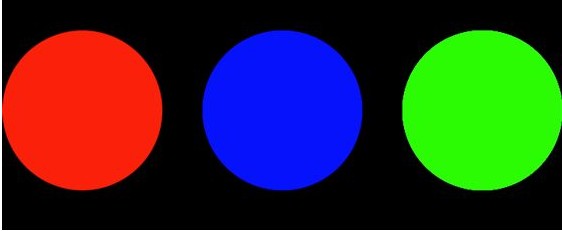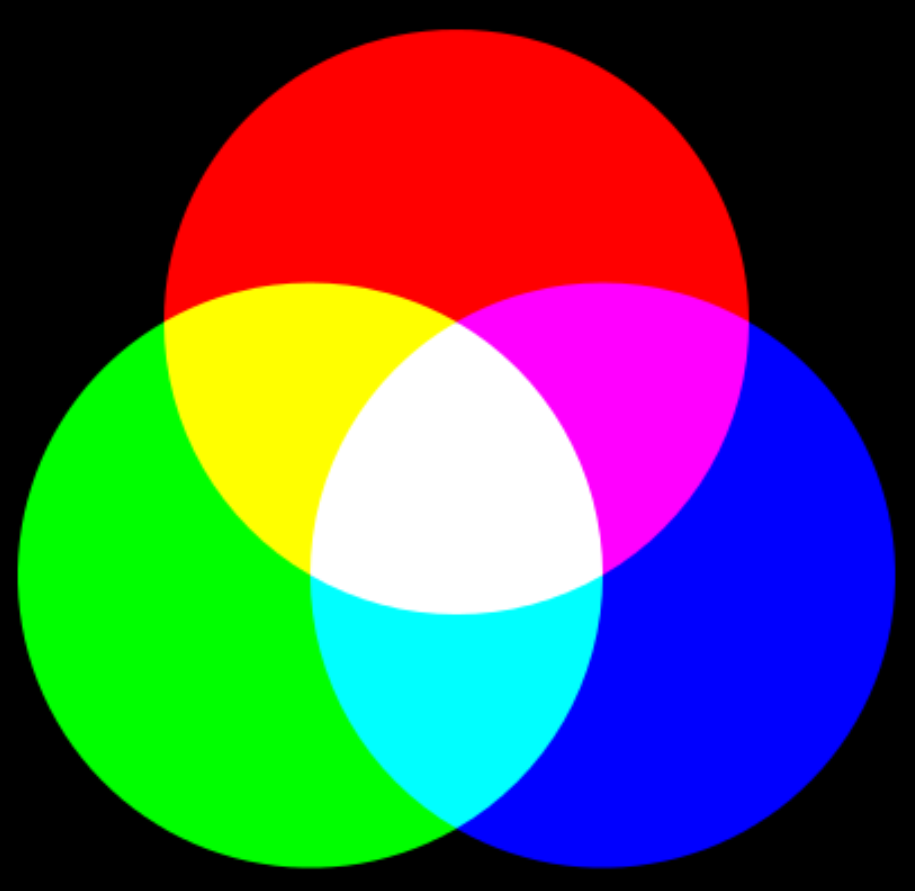RGB three Primary Colors Synthesized White Light
For the production of white LEDs synthesized with RGB three primary colors, the following issues must be paid attention to:
(1) wavelength of light
The main wavelengths of the light emitted by the three LED chips are generally: red light is 615~620nm, green light is 530~540nm, and blue light is 460~470nm. To achieve the best light effect, the best main wavelength ratio can be selected experimentally in the main wavelength range of the three kinds of light. In order to improve the color rendering index, a combination of blue light (460nm), green light (525nm), yellow light (580nm) and red light (635nm) can be used. The main wavelength ratio of this light can get the best color rendering index (above 95), the light efficiency can reach 35~40lm/W, and the minimum color temperature can be 2700K.
In order to take into account the luminous efficiency and the color rendering index, the dominant wavelength and luminous intensity of the light emitted by the three LED chips need to be optimally combined. The best results can be obtained by experimenting a few times depending on the mode and material used.
(2) Luminous intensity
For the ratio of the luminous intensity of the three LED red, green and blue chips, the general choice is 3 (red): 6 (green): 1 (blue), but we have to consider that the light decay of different chips is different. Moreover, after lighting and heating, the main wavelength shifts of the three primary colors are also different. We should consider these factors at the same time and conduct comprehensive experiments to get the best results. Therefore, the above ratios are only for reference, not fixed conclusions.
(3) How RGB mixes to emit white light
If the three LED chips are simply arranged and packaged together, the color light of the three LEDs cannot be well mixed into white light. Figure 1 shows a schematic diagram of RGB three-color mixing. Only area A is an area with all three colors, so only area A is white light, and other areas are not white light.
The light energy emitted by the three RGB chips is mainly distributed within a certain angle centered on the optical axis of the light source. Therefore, the light emitted by different chips at different positions must travel a certain distance before overlapping and then color mixing.
However, even after a certain distance of propagation, white light still appears only in the central area, that is to say, the areas outside the central area are still not mixed, and the light with a relatively large divergence angle travels away from the center after being propagated, thereby reducing the luminous efficiency. 
Figure 1 Mixing of RGB three primary colors
Therefore, how to efficiently mix light within a short propagation distance is the key to packaging high-quality tri-primary white LEDs. This problem can only be solved through a special package design. After adopting this structure, the three kinds of light are basically concentrated in one area for light mixing. Therefore, when making three-primary-color synthetic white LEDs, some special structural designs should be implemented on the heat sink and die, so that the three primary-color lights can be mixed in a concentrated area to generate effective white light.
White LED Market Status
The price of LED chips has risen by 50% in half a year, and the market is still in short supply.
Under the global wave of energy conservation and environmental protection, the two major industries are in full swing. One is the LED lighting industry, whose products are gradually popularized, and the other is the electric vehicle industry, which is moving toward popularization. During the three-month investigation, the reporter found that the popularity of the LED lighting industry has exceeded market expectations, from looking for customers everywhere to picking customers, from borrowing money to buy equipment to queuing up for venture capital investment. At the same time, the prices of LED-related products are also rising step by step. This emerging industry that brings “brightness” to the world has undoubtedly embarked on the road of sunshine.
This year’s LED industry can be described as hot. Among them, the hottest ones are upstream equipment, raw material suppliers, and midstream chip manufacturers. Shenzhen, China is the world’s largest high-power chip production base, with an annual output of 2 billion LED chips. And venture capital institutions are also coming to the door in an endless stream, with a view to participating in the stock market.






